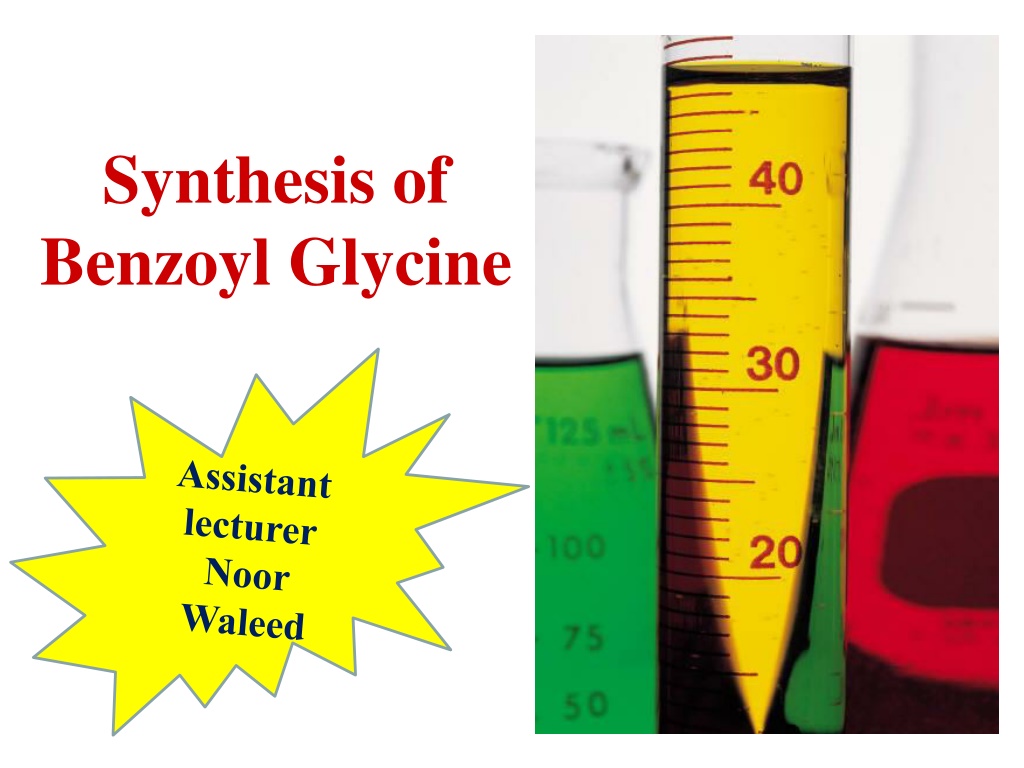Benzoylation Methods and Advantages Over Acetylation
Benzoylation is a reaction method involving the insertion of a benzoyl moiety instead of an active hydrogen atom in various functional groups. The process typically uses benzoyl chloride in the presence of Pyridine or Sodium hydroxide. The Schotten-Baumann Reaction is a common method in benzoylation, leading to the formation of benzoylated products. Benzoylation offers advantages over acetylation, such as obtaining crystalline solids with higher melting points and lower solubilities. Additionally, benzoyl derivatives can be prepared rapidly in an aqueous medium.
Download Presentation

Please find below an Image/Link to download the presentation.
The content on the website is provided AS IS for your information and personal use only. It may not be sold, licensed, or shared on other websites without obtaining consent from the author. Download presentation by click this link. If you encounter any issues during the download, it is possible that the publisher has removed the file from their server.
E N D
Presentation Transcript
Synthesis of Benzoyl Glycine
Benzoylation methods The insertion of a benzoyl moiety instead of the active hydrogen atom present in hydroxyl ( OH), primary amino ( NH2) or secondary amine function (>NH) is usually termed as the Benzoylation Reaction . This particular reaction essentially bears a close resemblance to the phenomenon of Acetylation except that
In this specific instance the reagent employed is benzoylchloride which reacts in the presence of Pyridine or Sodium hydroxide and not benzoic anhydride (as in the case of acetylation ).
Schotten-Baumann Reaction In the Schotten-Baumann method of benzoylation, the hydroxyl or amino compound (or a salt of the latter) is either suspended or dissolved in an excess of freshly prepared 10% (w/v) aqueous sodium hydroxide solution, together with a small excess of benzoyl chloride
The resulting mixture is shaken vigorously. It has been observed that under these experimental parameters benzoylation proceeds smoothly. Thus, the solid benzoylated product, which being insoluble in the aqueous medium, gets separated.
Simultaneously,the NaOH solution hydrolyses the excess of benzoyl chloride present in reaction mixture, thereby resulting into the formation of sodium chloride and sodium benzoate, which being water solubleremain in solution
Advantages of Benzoylation over Acetylation: There are, in fact, twomajor advantages of benzoylation over acetylation, namely : (a) First, generally the benzoyl derivatives are obtained as crystalline solids having comparatively higher melting points than the corresponding acetyl derivatives , besides, possessing lower solubilities in a wide range of solvents.
(b) Secondly, the benzoyl derivatives may be prepared rapidly and conveniently in aqueous medium, as compared to the acetylation carried out in acetic anhydride, acetyl chloride, and glacial acetic acid ; in addition to the fact that benzoyl chloride undergoes hydrolysis rather extremely slowly and sluggishly.
Synthesis of Benzoyl Glycine Theory: Glycine (i.e., -aminoacetic acid) interacts with one mole of benzoyl chloride, in the presence of 10% (w/v) NaOH solution, to yield benzoyl glycine with the elimination of one mole of HCl. The excess of 10% NaOH solution serves two purposes, namely : first, to remove the un reacted benzoyl chloride
secondly, the HCl eliminated reacts with NaOH to yield NaCl. Both sodium benzoate and sodium chloride are water-soluble, whereas the desired product benzoyl glycine being insoluble may be separated easily.
Equation: Chemicals Required: Glycine1g ; Sodium hydroxide solution 10% (w/v) : 10 ml ; Benzoyl chloride : (2 ml) ; Carbon tetrachloride : 4 ml ; Conc. Hydrochloric acid : 1-2ml
Procedure: 1.Dissolve 0.5 g (0.033 mol) of glycine in 5 ml of 10% NaOH solution contained in a conical flask. 2.Transfer (1 ml, 0.038 mol) of benzoyl chloride in approximately two equal lotsto the above solution (1). 3.Stopper the flask securedly and shake the contents vigorouslyafter each addition until all the benzoyl chloride has virtually reacted. 4. Pour the contents of the flask to a beaker and rinse the flask with a little water.
5. Add a few grams of crushed-ice into the solution and acidify the contents by addingconcentrated hydrochloric acid (0.5-1 mL)drop wise and carefully with constant stirring until the mixture is acid to Congo red paper (pH 5.0 Red ; pH 3.0 Blue-Violet). 6. Collect the resulting crystalline precipitate of benzoyl glycine, which is contaminatedwith a small amount of benzoic acid, on a B chner funnel, wash with cold water anddrain well . 7. Transfer the solid into a beaker and add 2 ml of carbon tetrachloride, cover itwith a clean water-glass, and boil it gently over an electric water-bath for 10 minutes (bp. CCl4 76.7 C). Thus, it will extract any benzoic acid
which may have been producedduring the course of reaction . 8. The resulting mixture is allowed to cool slightly, filter under gentle suction and washthe crude product on the filter with 1-2 ml of CCl4. The yield of the crude benzoyl glycine (mp 185 186.5 C)
Precautions: (1) The addition of benzoyl chloride to the alkaline mixture of glycine must be carriedout slowly. (2) Continuous shaking of the above mixture be done till the whole of benzoyl chloridehas reacted. (3) It is necessary to render the resulting mixture to acidic conditions with Congo Redpaper.
Recrystallization: Recrystallize the dried crude product from 20 ml of boiling distilled water with the addition of 0.5 1 g of powdered decolourizing carbon (activated carbon), if necessary. Collect the benzoyl glycine on a B chner funnel under suction and dry the pure product in an oven maintained at 110 C.
Uses: Conjugation with amino acids is an important route in the conjugation of drug and xenobiotic carboxylic acids for elimination. These amino acid conjugates are usually less toxic than their precursor acids and hence, are excreted readily into the urine and bile.























